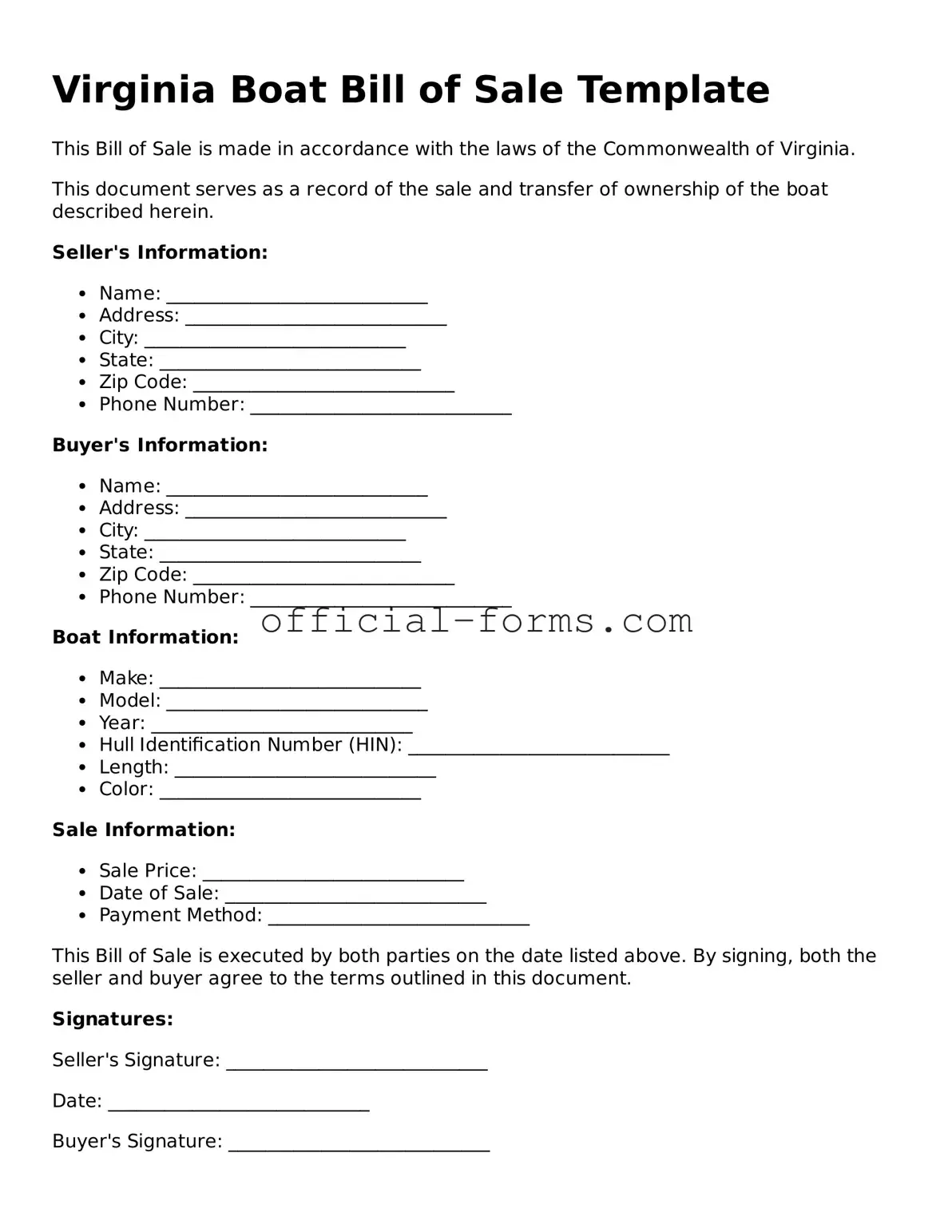Official Virginia Boat Bill of Sale Document
The Virginia Boat Bill of Sale form is a crucial document used to transfer ownership of a boat from one party to another. This form not only serves as proof of the transaction but also helps protect both the buyer and the seller by clearly outlining the terms of the sale. Understanding its importance can simplify the process of buying or selling a boat in Virginia.
Open My Boat Bill of Sale Now
